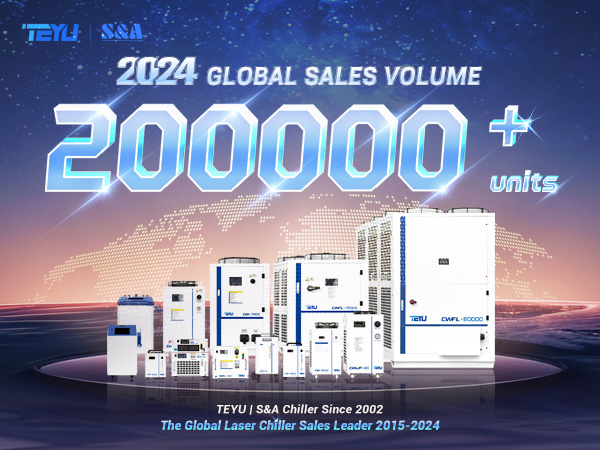Green laser welding enhances power battery manufacturing by improving energy absorption in aluminum alloys, reducing heat impact, and minimizing spatter. Unlike traditional infrared lasers, it offers higher efficiency and precision. Industrial chillers play a crucial role in maintaining stable laser performance, ensuring consistent welding quality and boosting production efficiency.
Green Laser Welding for Power Battery Manufacturing
As the new energy vehicle industry rapidly advances, power battery manufacturing demands higher precision and efficiency in welding technology. Traditional laser welding encounters significant challenges when dealing with highly reflective materials. Green laser welding, with its unique advantages, emerges as a key solution to these issues.
Challenges of Traditional Laser Welding
1. Low Energy Utilization for High-Reflectivity Materials
Aluminum alloy, the primary material for power battery casings, has a high reflectivity to traditional 1064nm infrared lasers. This results in low energy absorption, requiring increased laser power, which leads to higher energy consumption and greater equipment wear.
2. Safety Risks from Metal Spatter
During laser welding, plasma clouds cause metal particle spatter, which may enter battery cells, increasing self-discharge rates and even leading to short circuits.
3. Uncontrolled Heat-Affected Zone Expansion
Traditional laser welding produces a large heat-affected zone (HAZ), which can damage the internal separator of the battery, negatively impacting its cycle life.

Advantages of Green Laser Welding
1. Optimized Wavelength for Higher Energy Absorption
Green lasers (532nm) significantly enhance energy absorption in aluminum alloys, reducing energy consumption and improving welding efficiency.
2. High Power Density and Short Pulse Control
Green laser welding features high instantaneous power density and precise short pulse control, enabling rapid welding with a minimized HAZ, thereby reducing potential damage to the battery’s internal structure.
3. Precision Welding with Minimal Spatter
Optimized pulse waveform control in green laser welding effectively reduces spatter, improving weld quality and reliability.
The Essential Role of Industrial Chillers in Power Battery Laser Welding
Laser welding generates significant heat, which, if not efficiently dissipated, can lead to increased laser source temperatures, wavelength drift, power fluctuations, and potential equipment failure. Excessive heat also expands the HAZ, compromising battery performance and lifespan.
Industrial chillers ensure stable laser operation by providing efficient cooling and precise temperature control. Their intelligent management functions enable real-time equipment monitoring, early fault detection, and reduced downtime, thereby enhancing productivity. As a result, industrial chillers are not only crucial for maintaining the stability of laser welding systems but also essential for improving power battery welding quality and manufacturing efficiency.
With power battery welding moving towards higher precision and efficiency, the advancement of green laser technology, coupled with innovative industrial chiller solutions, is driving the evolution of new energy vehicle battery manufacturing.

We're here for you when you need us.
Please complete the form to contact us, and we'll be happy to help you.










































































































